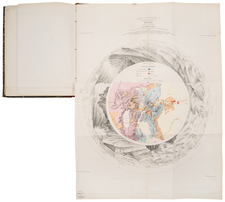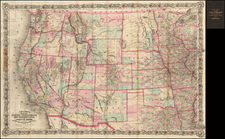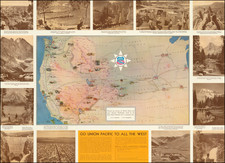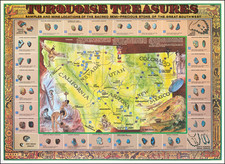Full original color example (with contemporary manuscript annotations!) of the most celebrated and historically important printed map of Texas, the 'cartographic birth certificate' of the Lone Star Republic created by the 'Father of Texas', Stephen Fuller Austin.
Stephen Austin's Map of Texas occupies an important place in American (and Texan) history and the progress of westward expansion. As the first broadly accurate general map of Texas to be published, it represents a monumental scientific achievement. A carefully devised and beautifully engraved composition, it gained tremendous commercial success and influence, and defined the geographic conception of Texas through the epic period of the Lone Star Republic. The product of the enterprising mind and tireless efforts of the founder of modern-Texas, Austin's map proved to be a brilliant rhetorical device promoting Anglo-American settlement, and the cause of Texan independence.
Austin's map is widely regarded as one of the most authoritative and richly-detailed primary documents recording the history of Texas. While Austin's map appeared in several progressively updated editions, the map was very popular and often heavily used, such that that all editions of the map are now prized.
Austin's map embraces the developed expanse of Texas, first published prior to its independence from Mexico. As Austin intended the map to showcase Texas to new settlers, the landscape is shown in a manner as to be as inviting as possible. The various colonial grants, finely distinguished by different colors, expand along courses of the rivers and the Gulf Coast, while thriving towns are connected by a burgeoning network of roads. The progress of modern development is shown to march across the Texan plains. To the east and west, beyond the realm of settlement, there extends an exotic country of 'Wild Horses and Cattle' and the domains of the fearsome Comanche nation.
Especially given the wild nature and large expanse of the territory, the accuracy of Austin's map is truly impressive. The courses of the major rivers are remarkably accurate, and the map denotes natural features such as 'Cross Timbers' and 'Enchanted rock'. Of considerable interest, this edition of the map notes key battles of the Texas War of Independence (1835-6), namely 'Fort Alamo' in San Antonio and 'Battle of 21 April 1836', referring to the decisive Battle of San Jacinto, near Houston.
The map's title is surmounted by the Mexican national symbol of an imperial eagle in flight above a nopal cactus, on each of the ears of which are engraved the names of the various states of Mexico, including 'Coahuila y Tejas'. In the lower-left corner appears a table informing prospective settlers of the number of families who have settled in each of Texas's colonies and the enticing promise of 4,428 acres of free land to the family of each new settler.
Importantly, the present 1839 edition is the first edition of the Austin maps to depict several highly-consequential developments which reconfigured the political landscape of the Republic of Texas. While previous editions of the Austin map clearly defined the southern border of Texas as running along the Nueces River, the 1839 edition defiantly shows the new Republic as extending southwards to the Rio Grande (Río Bravo). This distinction is historically important, as the dispute over this strip of territory was used in 1845 as the pretense for U.S. military intervention on the side of Texas, the opening salvo in what would become the Mexican American War.
Another addition of great import on the 1839 edition of the Austin map shows that while the names and boundaries of all of the Anglo-American grants are still present, those nearer the coast and in eastern Texas, are superimposed with the names and outlines of newly formed counties. This heralded the introduction of modern civil administration at the local level throughout much of Texas, as the traditional patriarchal system gradually gave way to elected county and municipal councils. Notably, 'Houston', which would eventually become Texas's largest metropolis, appears for the first time on the 1839 edition of Austin's map. It was one of the nineteen cities incorporated in 1837 by the Republic's legislature.
The historical interest of this example of Austin's map is enhanced by the inclusion of manuscript notations added to the map shortly after its publication. Foremost, "Austin" identifies the location of the Texas's new capital city, located on the banks of the Colorado River within the territory annexed to the Austin Colony in 1827. Founded as the village of Waterloo in 1837, it was renamed after Stephen Austin and designated the new capital in March, 1839, breaking news that was added for the first time to the 1840 edition of the map.
Further down the course of the Rio Colorado, the town of "Bastrop" is noted beside its former name (Mina), named after Felipe Enrique Neri, Baron de Bastrop, a colorful early supporter of Anglo-Texan settlers, who in reality, was not a nobleman, but a Dutch fugitive named Philip Hendrik Nering Bögel. Also included in manuscript are the newly incorporated towns of "Richmond" (near Fort Bend) and the aptly-named "Independence" in Washington County, which later became the first home of Baylor University, but today is essentially a ghost town. Further south, in the future vicinity of Corpus Christi, is "Live Oak Point," denoting a short-lived settlement, in addition to notations identifying "Aransas Pass", as well as the barrier islands of "Mustang", "San Jose" and "Matagorda".
Towards the far north, manuscript notations denote the "Bay of La Baca" and "La Baca River", referring to Lavaca Bay and River. Moving up to the northern Texas frontier along the Red River, is the annotation of "Coffee's Trading House", located at the site of modern-day Preston, Texas. Founded by Holland Coffee in 1837, the post played a critical role in the development of the region, marking the location where the Texas Road and Shawnee Trail crossed the Red River into Indian Territory (Oklahoma), and the origin of several important military expeditions. Further east, on the northern side of the river is "Fort Towson", an important U.S. army outpost guarding the 'Permanent Indian Frontier'.
The Story of How Austin's Map became the Cartographic 'Birth Certificate' of Texas
Stephen Austin's Map of Texas and the means by which it was created lie at the very center of the epic story of the founding of modern Texas. Going back to the early days of 1821, 'Tejas' was a largely-neglected frontier province of New Spain, which itself was then gripped in the final throws of the revolution which would shortly establish Mexico's independence. The non-indigenous population numbered only 2,500, centered on a handful of missions and presidios, and development was hindered by fierce resistance of Comanche and Apache warriors who resented European encroachment on their territories. In the final days of its control of Mexico, the Spanish regime granted concessions to foreigners to settle certain frontier regions, in order to act as bulwarks against the native peoples. One such concession was given to an American, Moses Austin in January, 1821 to settle 300 Catholic families along Texas's Brazos River. Moses Austin died shortly thereafter and his title passed to his son, Stephen.
In 1822, during the political turmoil that ensued following Mexico's independence, Austin's grant was rescinded. He traveled to Mexico City in an effort to lobby the government. Austin acutely understood the political and rhetorical power of cartography and realized that graphically defining Texas on a map would be useful in both representing his claims to the authorities and promoting his colonizing schemes to prospective immigrants. Up to this time, the geographic knowledge of Texas was very imprecise, and most intelligence that had been gained was seldom printed, but rather hidden away in archives, owing to the old Spanish policy of cartographic secrecy. Austin had access to Alexander von Humboldt's seminal map of New Spain (1803), of which the coverage of Texas was its weak point, and an 1807 manuscript map of Texas by the Franciscan friar Jose Maria Puelles, which Austin utilzed in order to draft his "Map geographico de la provencia de Texas" (1822). While a crude endeavour when compared to his later works, it then represented a major advancement as the most geographically advanced map of the region.
In 1823, Austin succeeded in convincing the Mexican congress to re-instate his grant, and was accordingly given the title of 'empresario', or agent of the colonizing scheme. As a part of the agreement, he promised to produce an accurate general map of Texas. Austin's title was upheld following imposition of the Mexican Constitution of 1824, which devolved powers to the individual states. Importantly, Texas was merged with the more populous state to the southwest, becoming part of the State of Coahuila y Tejas, ensuring that the regional base of power would be in faraway Saltillo or Monclova. Fortunately, the authorities in Coahuila generally showed themselves to be tolerant, if not supportive, of Anglo-American settlers, as they hoped such developments would secure their northern frontier and raise tax revenues.
Austin energetically set about attracting settlers to his colony, with the first wave of families "the Old Three Hundred" arriving late in 1825. As depicted on his map, over the rest of the decade, the territory of Austin's grant was progressively expanded, as he managed to attract a further 900 to his colony. During the same period, other American empresarios founded colonies, as shown on the map, notably 'De Witt's Colony', 'Whelin's', 'Zavalla's', 'Burnet's' and 'Felisola's'' grants. While conditions were challenging, most of these colonies succeeded in establishing permanent settlement. While technically all new immigrants were to swear allegiance to Mexico as citizens, be Roman Catholic, learn Spanish, and observe a prohibition on slavery, these stipulations were rarely enforced. Gradually, a new society was developed, demographically and culturally distinct from the rest of Mexico.
Central to his designs, Austin worked tirelessly towards creating an accurate general map of Texas. He had a voracious appetite of geographic information, constantly soliciting land surveyors throughout the land for any and all plat maps and regional surveys. His efforts were rewarded by some fine surveys, notably John Kerr's sketch of the mouth of the Lavaca River and John Williams's charting of the region that lay between Sabine and Trinity rivers. Additionally, Austin took the time to perform his own surveys. In 1826, he charted Galveston Island and bay, and in a separate effort, mapped the courses of the Colorado and Brazos Rivers. This resulted in his manuscript "Map of Texas by S F Austin, Bexar, August 8, 1827", a distinct improvement over his 1822 map.
Meanwhile, Mexican president Guadalupe Victoria began to suspect that the Anglo-American immigration was a 'Trojan Horse', a thinly veiled endeavor to annex Texas to the United States. In 1828, he dispatched General Manuel de Mier y Téran to conduct a detailed reconnaissance of the region. During his mission Téran conducted a variety of scientific surveys regulated by astronomical observations. He added some of his findings to a copy of Fiorenzo Galli's Texas (1826), which, lithographed in Mexico City, was the first printed map of Texas, today known in only a single copy. Although the General and Austin were supposedly at political cross-purposes, the two men became fast friends, and shared geographic intelligence, a contribution specifically acknowledged by Austin on the map, as a corollary to its title.
Austin was finally satisfied that he had obtained the intelligence necessary to create the finest possible general map of Texas. Armed with the knowledge gained from Téran and new surveys such as Alexander Thompson's chart of Galveston Bay, done for the Mexican Navy, Austin spent countless hours perfecting his creation. Over twenty sketches are preserved in his personal papers.
Austin contacted his kinsman and personal attorney, Thomas Leamington, in Philadelphia to arrange for the publication of the map. Leamington brought Austin's project to the attention of Henry Schenk Tanner (1786-1858), who was then the most respected and successful American map publisher, responsible for such grand projects as A New American Atlas (1819-23). In June, 1829, Austin sent a finished manuscript map to Tanner, who went to great efforts to perfect the design and carefully engrave the map. Copies of the first edition appeared March, 1830. It was of immediate importance and quickly became the authoritative cartographic conception of Texas.
In July, 1829, Austin sent another manuscript version of his map, this time with Spanish text, to the Mexican bureaucracy, hoping that it would eventually reach the desk of President Vincente Guerrero. In doing so, he sought to assure Chapultepec Palace of his loyalty, writing that
I perform this service to my adopted country in deference to the duty of a citizen and in case his excellency the president should esteem it proper to command the map to be engraved and published I grant to the national government for that purpose all the rights to the map which belong to me by the law as its author.
On another occasion, Austin assured the Mexican Treasury Secretary that
My purpose [in making the map] has been to add to the fund of geographic knowledge of Mexican territory, and to make known our beloved Texas to the Mexicans and the world.
It is not clear what high-level administrators in Mexico City made of the map, and for whatever reason they never acted to have it published.
Austin's map, in its various forms, was in effect the centerpiece of a clever double-sided propaganda campaign. By having the map published and disseminated in the United States, he hoped to promote Texas and to attract further American immigrants whose arrival would be necessary for the region to become a fully developed society. On the other hand, by sending a special copy of the map as a tribute to the Mexican government, he hoped to assure them of his loyalty, and by extension, of the Anglo-Texan colonists in general. He knew that the future of the Texas he wished to create would be in jeopardy if he did not maintain the tolerance, if not the support, of the Mexican government. Even the unique decorative vignette added to the title of the map paid respect to Texan fidelity within the Republic of Mexico.
While Austin was successful in promoting Texas within the United States, he failed to gain the favor of the Mexican government. The Anglo-American settler population reached 30,000, outnumbering the Mexican-born citizens by a factor of four to one. The Mexican government feared that this demographic shift was a threat to its national security. As the first copies of Austin's map appeared from Tanner's press, President Anastasio Bustamante enacted the new laws of April 6, 1830, which effectively banned all foreign immigration to Texas. While Americans continued to arrive illegally, the Texan colonists and the central government were now heading on a collision course.
In 1835, the conservative regime of President Antonio López de Santa Ana, announced plans to enact the 'Siete Leyes' (Seven Laws) which would dissolve the elected state governments and to impose direct federal rule over all of Mexico. As was the case in several other Mexican states, the Texans found these developments to be absolutely intolerable and in October of that year, commenced an armed rebellion against Mexican rule. After an epic series of military campaigns, Texan forces decisively defeated and captured Santa Ana at the Battle of San Jacinto on April 21, 1836. The Republic of Texas was born, with Stephen Austin becoming its first Secretary of State. Sadly, Austin, who due to his vision, drive and intellect had done more than any other man to create Texas, died of a sudden illness on December 27, 1836. Sam Houston rightly eulogized him as the true "Father of Texas".
Austin's legacy would survive him in the form of his great map. Tanner published successive updated issues in 1833, 1834, 1835, 1836, 1837, and the present edition of 1839. In the early years of the republic, the Austin map, would be imbued with a new symbolic significance. While the Lone Star Republic maintained de facto independence, it was never recognized by Mexico, and remained under constant threat of invasion. While the map does not specifically proclaim succession from Mexico, it nevertheless shows Texas to be a clearly defined and separate political entity, traversed by the improvement of the Anglo-Texan colonists. In this sense, the present 1839 edition very much played the dual roles of legitimizing Texan independence and acting as an invitation to Americans to migrate to a thriving and inviting new land.
Austin's map maintained an enduring influence. In 1840, the map was revised again and appeared in Francis Moore's, Jr.'s celebrated work, a Map and Description of Texas. Subsequent editions were published in 1845 and 1846. It was also a key source for William Emory's Map of Texas and Countries Adjacent (1844), which was the primary cartographic aide employed by the U.S. Army during the Texas campaigns of the Mexican American War. While the Austin map would eventually be supplanted in accuracy by maps based on more modern data, it would never be rivalled as the most historically significant and rhetorically powerful map of Texas.
References: Bryan & Hanak, Texas in Maps, pp.10-12; Cohen, Mapping the West, pp.110-3, plate 21 (1830 ed.); Eberstadt, Texas, 162:43 (1840 ed.); Fifty Texas Rarities, no.10 (1830 ed.); Hayes, Historical Atlas of the American West, pp.80-3, map 151 (1830 ed.); Howes, USiana, A404 (1830, 1836 & 1837 eds.); Martin, 'Maps of an Empresario: Austin's contribution to the Cartography of Texas', The Southwestern Historical Quarterly, vol.85 (July, 1981-April, 1982), pp.317-400; Martin & Martin, Maps of Texas & the Southwest, pp.121-3 & plate 29 (1830 ed.); Schwartz & Ehrenberg, Mapping of America, p.253, plate 154 (1830 ed.); Streeter, Bibliography of Texas, part III, vol.1, no.1115e (1839 ed.).









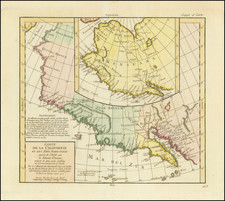
![(Texas) Denkschrift über eine Reise nach Nord-Mexiko, verbunden mit der Expedition des Obersten Donniphan, in den Jahren 1846 und 1847. Von Dr. A. Wislizenus. Aus dem Englischen übertragen von George M. von Ross. Mit einem wiffenschaftlichen Anhange und drei Karten. [Description of a voyage to northern Mexico connected with Colonel Doniphan's expedition in 1846 and 1847 By Dr. A. Wislizenus. Translated from the English by George M. von Ross. With a scholarly appendix and three maps.]](https://storage.googleapis.com/raremaps/img/small/88574.jpg)
